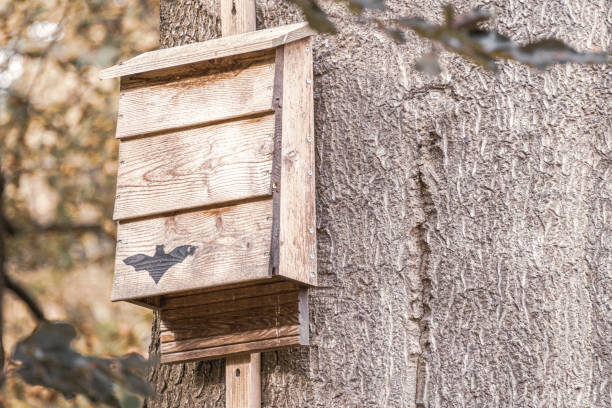Bats play a crucial role in maintaining a healthy ecosystem by controlling insect populations, pollinating plants, and dispersing seeds. Building a bat house is an excellent way to encourage these beneficial creatures to roost near your home while providing them with a safe and suitable habitat. Here’s your comprehensive guide on how and where to build a bat house.
Materials Needed:
Wood:
Exterior-grade plywood or cedar boards (avoid pressure-treated wood)
Rough lumber (pine or cedar) for internal baffles
Tools:
Saw (circular or handsaw)
Screwdriver or drill
Screws or nails
Sandpaper or a sander
Staple gun (if using mesh)
Steps to Build a Bat House:
1.Choosing the Right Design:
Opt for a design with a landing area at the bottom and internal baffles for bats to cling to.
Designs vary but typically consist of chambers with grooves or mesh for bats to roost.
2.Cutting the Wood:
Using your chosen design, cut the wood pieces to the specified dimensions.
Sand the edges and surfaces to avoid splinters and rough spots.
3.Assembling the House:
Assemble the bat house according to the design’s instructions, using screws or nails to secure the pieces.
Ensure proper ventilation and drainage holes in the structure.
4.Mounting the House:
Choose the right location: 10-15 feet off the ground, facing south or southeast, with ample sun exposure.
Mount the bat house on a pole, a building, or a tree. Ensure it’s secure and won’t sway or move.
Where to Place the Bat House:
1.Location:
Choose a location with at least 6-8 hours of direct sunlight daily.
Near a water source, like a pond or stream, can attract more bats.
2.Height and Accessibility:
Mount the bat house 10-15 feet high to prevent predators’ access.
Avoid areas where branches or foliage might obstruct the entry.
3.Space and Safety:
Ensure there’s open space in front of the house for bats to access it easily.
Keep it away from bright lights to prevent disorientation of the bats.
Benefits of Having a Bat House:
Natural Pest Control: Bats feed on insects, helping control mosquito and insect populations.
Biodiversity and Ecosystem Health: Encouraging bat populations supports biodiversity and healthier ecosystems.
Pollination and Seed Dispersal: Some bat species play a vital role in pollination and seed dispersal.
Building a bat house is a fulfilling and environmentally friendly way to support these beneficial creatures. By providing them with a suitable habitat, you contribute to a healthier ecosystem while enjoying the benefits of natural pest control. Consider building and installing a bat house to welcome these incredible mammals into your environment.






Add comment